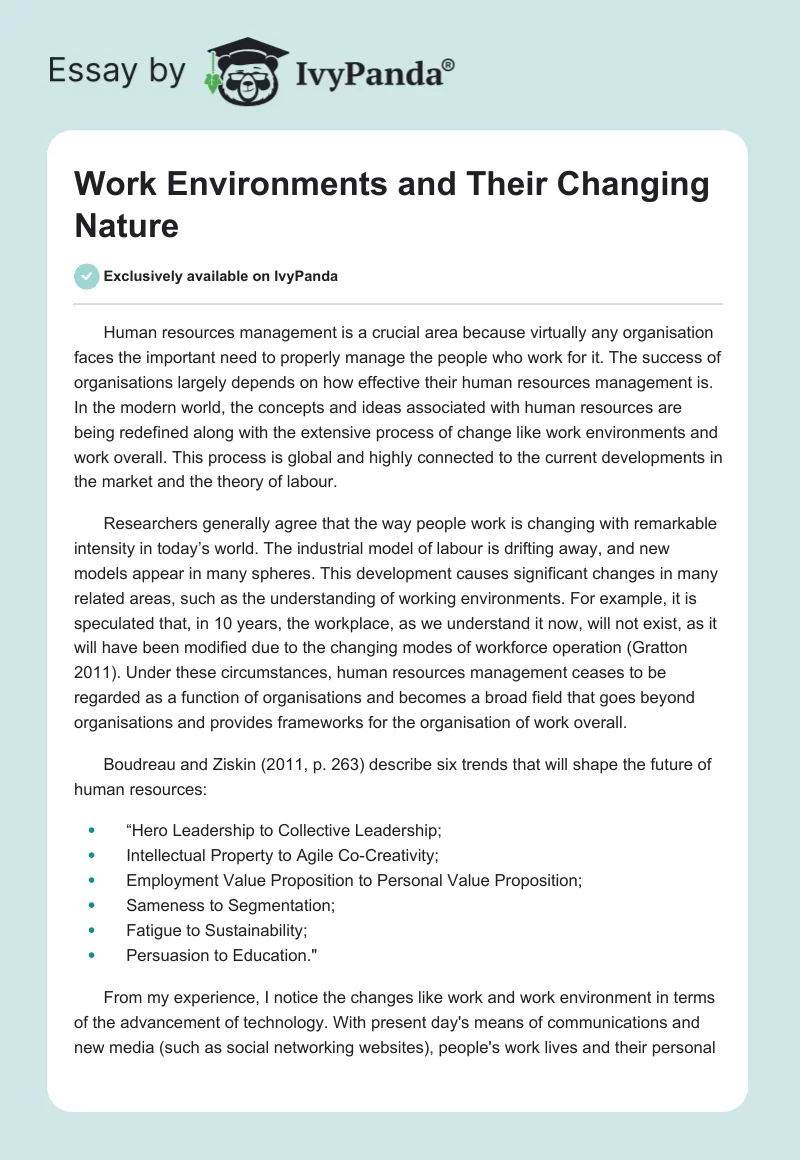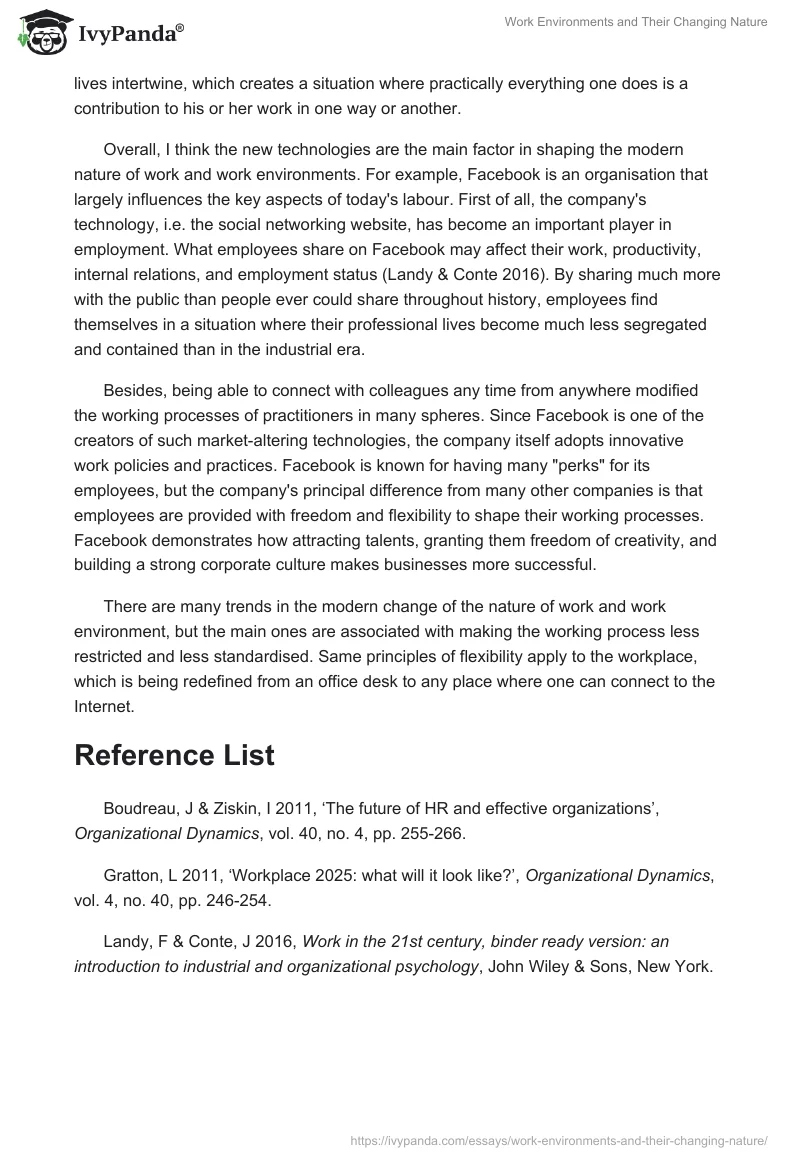Human resources management is a crucial area because virtually any organisation faces the important need to properly manage the people who work for it. The success of organisations largely depends on how effective their human resources management is. In the modern world, the concepts and ideas associated with human resources are being redefined along with the extensive process of change like work environments and work overall. This process is global and highly connected to the current developments in the market and the theory of labour.
Researchers generally agree that the way people work is changing with remarkable intensity in today’s world. The industrial model of labour is drifting away, and new models appear in many spheres. This development causes significant changes in many related areas, such as the understanding of working environments. For example, it is speculated that, in 10 years, the workplace, as we understand it now, will not exist, as it will have been modified due to the changing modes of workforce operation (Gratton 2011). Under these circumstances, human resources management ceases to be regarded as a function of organisations and becomes a broad field that goes beyond organisations and provides frameworks for the organisation of work overall.
Boudreau and Ziskin (2011, p. 263) describe six trends that will shape the future of human resources:
- “Hero Leadership to Collective Leadership;
- Intellectual Property to Agile Co-Creativity;
- Employment Value Proposition to Personal Value Proposition;
- Sameness to Segmentation;
- Fatigue to Sustainability;
- Persuasion to Education.”
From my experience, I notice the changes like work and work environment in terms of the advancement of technology. With present day’s means of communications and new media (such as social networking websites), people’s work lives and their personal lives intertwine, which creates a situation where practically everything one does is a contribution to his or her work in one way or another.
Overall, I think the new technologies are the main factor in shaping the modern nature of work and work environments. For example, Facebook is an organisation that largely influences the key aspects of today’s labour. First of all, the company’s technology, i.e. the social networking website, has become an important player in employment. What employees share on Facebook may affect their work, productivity, internal relations, and employment status (Landy & Conte 2016). By sharing much more with the public than people ever could share throughout history, employees find themselves in a situation where their professional lives become much less segregated and contained than in the industrial era.
Besides, being able to connect with colleagues any time from anywhere modified the working processes of practitioners in many spheres. Since Facebook is one of the creators of such market-altering technologies, the company itself adopts innovative work policies and practices. Facebook is known for having many “perks” for its employees, but the company’s principal difference from many other companies is that employees are provided with freedom and flexibility to shape their working processes. Facebook demonstrates how attracting talents, granting them freedom of creativity, and building a strong corporate culture makes businesses more successful.
There are many trends in the modern change of the nature of work and work environment, but the main ones are associated with making the working process less restricted and less standardised. Same principles of flexibility apply to the workplace, which is being redefined from an office desk to any place where one can connect to the Internet.
Reference List
Boudreau, J & Ziskin, I 2011, ‘The future of HR and effective organizations’, Organizational Dynamics, vol. 40, no. 4, pp. 255-266.
Gratton, L 2011, ‘Workplace 2025: what will it look like?’, Organizational Dynamics, vol. 4, no. 40, pp. 246-254.
Landy, F & Conte, J 2016, Work in the 21st century, binder ready version: an introduction to industrial and organizational psychology, John Wiley & Sons, New York.


